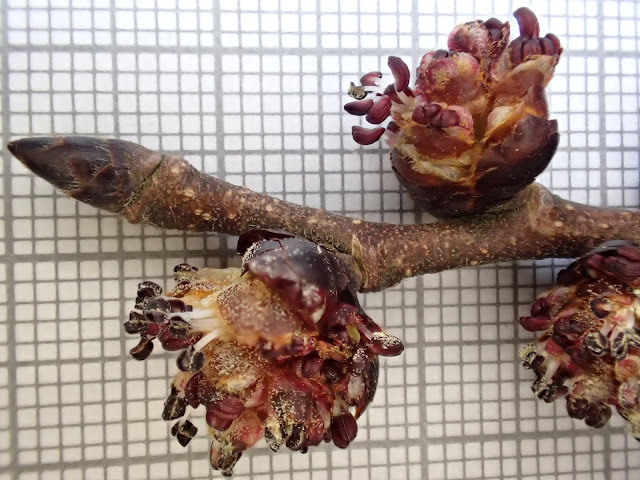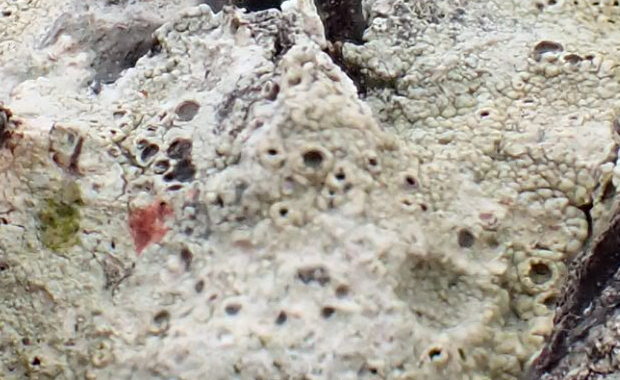 |
| Hazel - 2 March - Low Bentham Churchyard |
 |
| Female Alder Flowers |
 |
| Wych Elm flowers - I must admit, they have opened considerably since I picked them a few days ago. |
Delight in the Natural World:- This eco-blog by Judith Allinson features:* Settle Wildflower Walks * The Rainforest Fund * Rainforest Issues * Fundraising Ideas * Nature Conservation * Grasses, Mosses, Lichens and Algae * Settle * St John's Methodist Church and Hall, N Yorks * - Started on 1 Jan 2008
 |
| Hazel - 2 March - Low Bentham Churchyard |
 |
| Female Alder Flowers |
 |
| Wych Elm flowers - I must admit, they have opened considerably since I picked them a few days ago. |
21 Jan:
January and February are a thin time for wild flowers in Yorkshire, after the last "New Year Plant Hunt" flowers of last year have died off..
However, here are some flowers in the Friends Meeting house on 21 Jan photographed after a Settle Hub Support Group. Yes they are garden plants but they could escape...
This is the "end" of my second strip of 1 km squares (monads) in SD 86. - My project to record all 100 monads of my home hectad SD86 over ten years.
 |
| Xanthoria calcicola |
In 2019 (starting in March) I worked my way up the first strip from Rathmell (Monad 00 - SD8060) to Helwith Bridge quarry and SSSI Bog (Monad 09 - SD8069)
In 2020 I worked the way - with several diversions - up the second strip. Starting from Monad 10 SD8160 - Mearbeck - Settle Junction - noisy A65 - then through Settle, Giggleswick, Little Stainforth. Sherwood Brow finally to Helwith Bridge to Monad 19 - SD8169 - which is where we are at today.
Much of it was done during "lockdown" and on walks from my house or from the supermarket carpark in Settle.
As leaves came out in April and May 2020 I went on walks concentrating on trees, leaving the rocks for later. Walks happened quicker than I had time to write up.. so some results still remain in packets or on sheets of paper.. Oh Dear. Mistake!! And then I started blogging about Settle Wildflower Lockdown Walks
When I commenced the project I only intended visiting a corner of each monad - Now I am visiting more and more of each monad.
It is March 2021 so I need to "finish" my second strip. I look at the map, and think "Helwith Bridge - SD8169 - a five minute drive up the road - 2.8 miles away.. No problem. Have it done in a "jiff".
(After all I already have some results from that hot Sunday last year when I walked up the deserted B6471 to Helwith Bridge Quarry Carpark beside the river and found Ramalina fraxinea on a tree beside the river and a beautiful patch of Peltigera species. ).
Lunchtime 1: (5 March)
Park at the Helwith Bridge Corner. (Where you would overshoot to if you are driving to fast along the B6479 just before the Helwith Bridge turnoff) The dry stone walls in either side of the road between that corner and the Railway bridge reveal 11 species.
No Acarospora fuscata! or excessive Klebsormidium crenulatum (Nuisance alga) That is interesting. many of the gritstone walls higher up have a lot. Is this because it is greywacke and slate and not gritstone. Or because it is low down in the valley bottom. Or because of dust from the road. or because no manure has been sprayed. (Not the last - I saw manure on the field). The road is a bit dusty because of Lorries coming form the Roadstone Quarry.
Have to come back for a Zoom meeting (A practice for a YNU Zoom Chat Meeting )
Evening 1: (5 March)
 |
| Diploschistes muscorum - See chemicals on left: K yellow, C red |
I head for two big ash trees near a barn. Yep, my efforts are rewarded: I do a little jig
Normandina pulchella !!
Parmalina pastillifera!!
(These were both thought to be rare in this area at least.. I am finding them quite often now)
 |
| Normandina pulchella |
 |
| Parmalina pastillifera |
In the dwindling twilight I look round the outside of the old barn walls. Surely this Xanthoria is not ordinary Xanthoria parietina (though there is some of that there too, loooking green in comparison)
It is big but it is darker orange than the usual, it is not fruiting, and it has lots of curly wrinkles that could be described as isidia.
It is 18.10 and cold and almost dark as I return home. How wonderful that the days are now getting longer!!
Look out for part b of this Monad: SD86 - 19 - SD8169b. to be written up shortly .. maybe
There are many different habitats in the churchyard - I wonder if we can find a different lichen for each habitat?
Well that is 16 habitats - I wonder if we can find 15 lichens?
This post is only half finished - I have made two further trips since starting this page, and will add the new lichens found later.
 |
| Wet Caloplaca flavescens on basic rock |
 |
| Evernia prunastri On Oak tree branch |
 |
| Parmelia saxatilis On Acid gravestone |
 |
| Err.. |
 |
| Hmm - need to find a name for this - on a limestone memorial |
 |
 |
| There is one young oak tree that is really good for lichens |
 |
| Psilolechia lucida - likes acidic stone surface. |
 |
| Psilolechia lucida |
 |
| Hypogyna revolouta maybe |
 |
| Mezgeria violacea - thallose liverwort indicator of nitrogen compounds in the air. |
 |
| Punctellia subrudecta on Oak Tree |
 |
| Physconia grisia |
 |
| Gunge? |
 |
| Peltigera hymenina |
 |
| Peltigera hymenina |
 |
| Punctelia subrudecta |